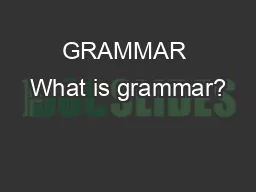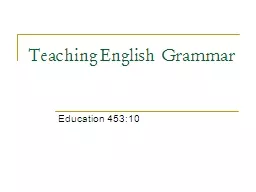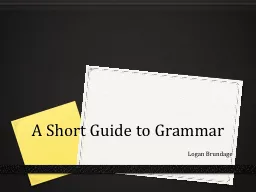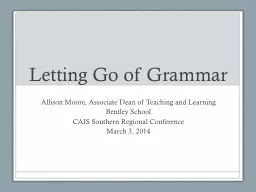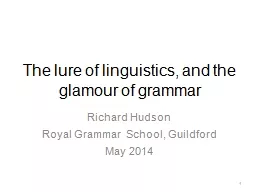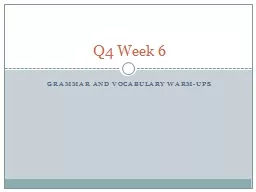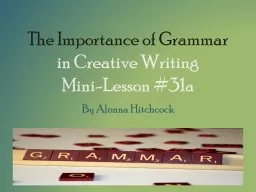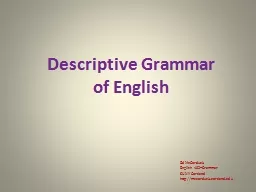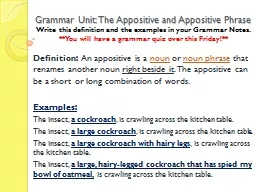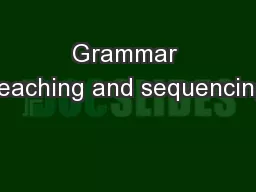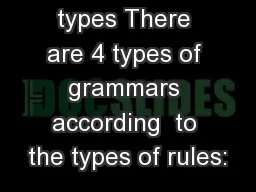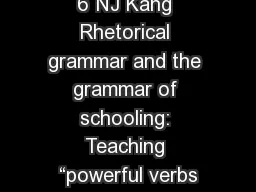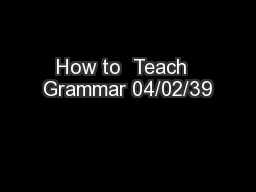PPT-GRAMMAR What is grammar?
Author : ellena-manuel | Published Date : 2018-02-27
Presented by Amy Dave Rafi Tyler September 22 2014 SLA Section 1 class activity definitions Some problems with definitions prescriptive descriptive link with
Presentation Embed Code
Download Presentation
Download Presentation The PPT/PDF document "GRAMMAR What is grammar?" is the property of its rightful owner. Permission is granted to download and print the materials on this website for personal, non-commercial use only, and to display it on your personal computer provided you do not modify the materials and that you retain all copyright notices contained in the materials. By downloading content from our website, you accept the terms of this agreement.
GRAMMAR What is grammar?: Transcript
Download Rules Of Document
"GRAMMAR What is grammar?"The content belongs to its owner. You may download and print it for personal use, without modification, and keep all copyright notices. By downloading, you agree to these terms.
Related Documents

